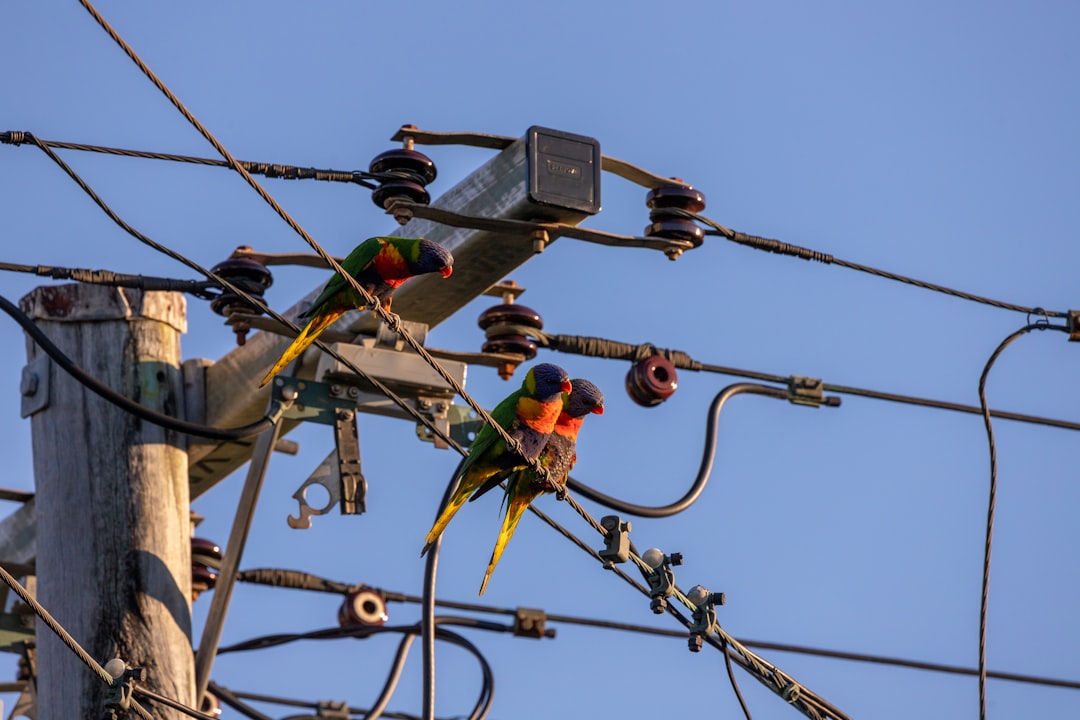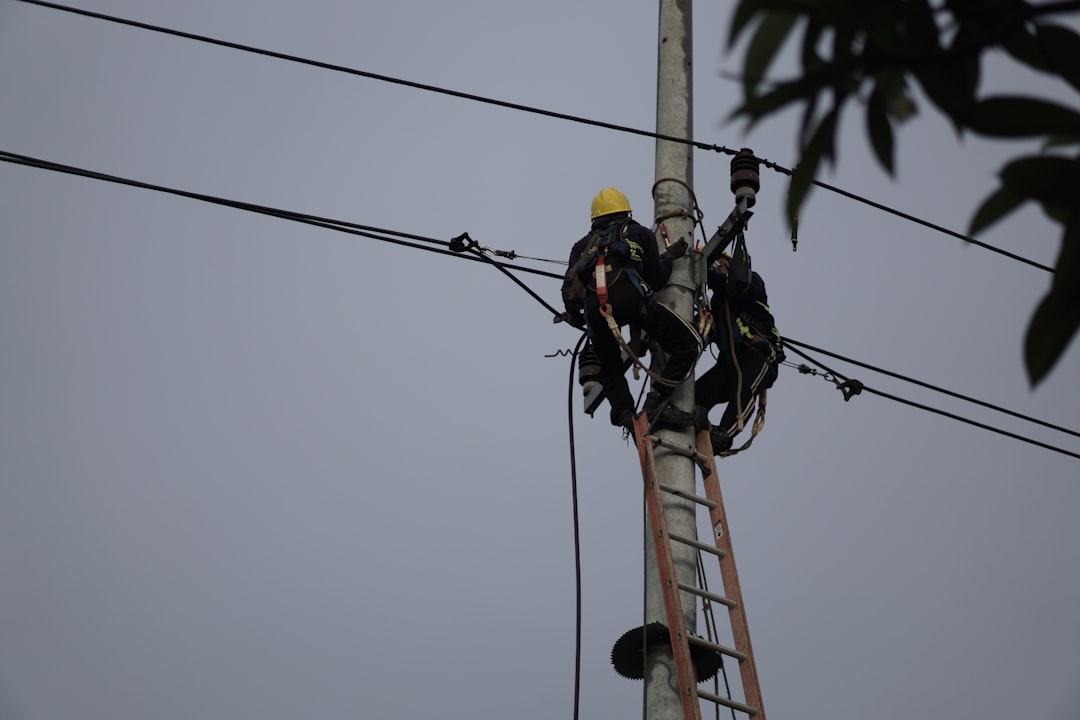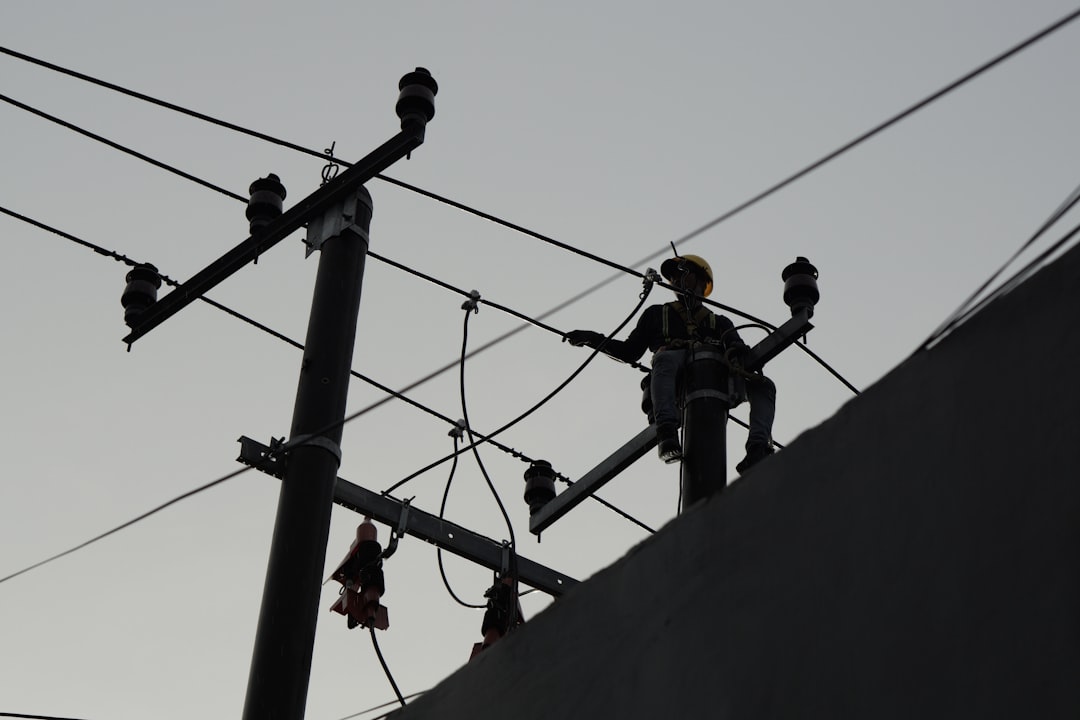

Engage prospects with a scan and streamline customer engagement with FREE QR code marketing tools by Sona – no strings attached!
Create a Free QR CodeFree consultation

No commitment

Engage prospects with a scan and streamline customer engagement with FREE QR code marketing tools by Sona – no strings attached!
Create a Free QR CodeFree consultation

No commitment
As digital transformation accelerates in the electrical contracting sector, standing out and driving meaningful engagement is more challenging than ever. Electrical contractors face persistent pressure to modernize customer touchpoints, streamline safety compliance, and bridge the gap between their field operations and digital channels. A major challenge is that valuable prospects or leads often go undetected due to reliance on traditional, paper-based processes or incomplete digital tracking, resulting in missed growth opportunities and diminished competitive edge.
QR codes have become a powerful tool for electrical contractors to seamlessly connect offline experiences such as jobsite signage, safety documentation, equipment labels, or vehicles with dynamic online actions. These codes help address long-standing issues like lack of real-time visibility into client interest, difficulty in tracking engagement, and cumbersome manual follow-up. By making it easy for anyone to access service information, compliance logs, booking pages, and customer reviews with a simple scan, contractors can capture previously invisible signals and craft more responsive experiences.
Embedding QR codes within daily workflows empowers electrical contractors to replace outdated processes, ensure accurate data capture, and enable a higher level of personalization in every customer interaction. This strategic shift illuminates engagement that was previously anonymous or untracked, strengthens compliance, improves operational speed, and creates a feedback loop that drives growth. Read on to see how QR can be woven into electrical services to unlock measurable business benefits and solve industry pain points directly.

Electrical contractors do not need another complex platform or app to improve engagement and efficiency. What they need is a smarter bridge between everyday field moments and the digital experiences that drive bookings, compliance, and revenue. QR codes provide that bridge by making it effortless for clients, inspectors, and teams to move from physical touchpoints to high-value online actions in seconds.
Start by acknowledging where analog processes are holding you back. Printed brochures that never convert, paper estimate forms that get lost in transit, jobsite binders with outdated safety sheets, and business cards that go missing after a meeting all limit visibility and slow the path to action. Converting these analog moments into scannable, trackable interactions delivers immediate benefits: more accurate data, faster follow-up, and a clearer view of buyer intent.
When executed well, QR codes do more than reduce friction. They transform how your teams prioritize work, how you measure marketing spend, and how you maintain regulatory readiness across jobsites and equipment. The result is a streamlined operation that turns every field interaction into a measurable step toward conversion.

Electric work is physical by nature, yet clients increasingly expect instant digital access to schedules, safety documentation, warranties, and bids. Every minute a customer spends hunting for a URL or waiting for a callback is a minute where interest fades. QR codes remove that friction by tying the real world to the right digital destination at the exact moment of need. One scan can open a booking calendar, launch a pre-filled estimate request, show a digital portfolio, or verify a safety certificate.
The industry’s compliance burden also makes traceability essential. Crews need current lockout-tagout procedures, equipment manuals, and inspection histories during field work. Clients want to validate insurance, licensing, and safety training status before or during a job. Dynamic QR codes let teams update destinations in real time as regulations change or assets move between sites, avoiding reprinting costs and compliance gaps.
Whether you are aiming to streamline emergency response, lift repeat bookings, or remove bottlenecks from safety audits, QR codes provide a lightweight yet powerful path to measurable improvement.
Not all QR codes are created equal. The destination, format, and functionality should match the job at hand. Electrical contractors benefit most from formats that simplify booking, improve communication, and surface critical information at the moment it is needed.
A best practice is to favor dynamic QR codes over static for any asset that will be widely deployed or requires analytics. Dynamic codes allow you to edit destinations, add UTM parameters, and collect scan data without reprinting. Static codes are suitable for fixed PDFs or evergreen content that will not change.
With Sona QR, you can manage all these formats in one dashboard, set naming conventions for easy asset management, and enable dynamic updates that keep every code current and useful.

To capture more demand, place QR codes where prospective clients and stakeholders already interact with your brand. Think of each surface as a potential gateway: a vehicle that people see on the road, a fence sign at a commercial jobsite, or an invoice that lands on a homeowner’s kitchen counter. Each of these surfaces can initiate a productive action if you make it easy to scan and act.
Look for gaps where awareness is high but follow-through is inconsistent. For example, vehicles build recognition but rarely drive immediate action without a clear next step. Invoices reach decision makers yet often lack a frictionless path to feedback or add-on services. Safety boards get attention from crews and inspectors, but they rarely include a direct link to up-to-date digital materials. In each case, a QR code closes the loop.
By aligning QR placement with the intent of the moment, you transform static surfaces into active channels that continually feed your pipeline and your data.

Use cases should be practical, repeatable, and tied to measurable outcomes. Below are examples that solve common challenges like slow bookings, poor feedback volume, and opaque compliance status. Each one turns a routine interaction into a data-rich action that your team can track and optimize.
Integrate these codes across vehicles, paperwork, and site assets so you can capture engagement from prospects who might never fill out a web form. The visibility you gain into who scanned, where, and why becomes the foundation for smarter follow-up and more relevant marketing.
Every scan is a signal: the surface someone scanned from, the time of day, the type of device, and the destination all reveal intent. When you deploy unique QR codes for different stages of the journey, your audience effectively segments itself in real time. This makes retargeting more precise and your follow-ups more timely.
For electrical contractors, consider the audiences you care most about: homeowners researching repairs, facility managers seeking proposals, general contractors evaluating subs, and inspectors validating documentation. Each audience has distinct moments of intent that you can tag and route to the right workflow in your CRM and ad platforms.
This approach replaces spray-and-pray marketing with dynamic, behavior-based audiences that evolve as scanners engage with different codes across your footprint.
QR codes work best when they connect, rather than compete with, your existing channels. Instead of treating print, out-of-home, events, and social separately, use QR to unify them into a single system that captures interest and carries people forward to the next best action. You gain a connected journey and data continuity that is otherwise hard to achieve in a field-driven business.
In electrical contracting, the most common touchpoints include vehicles, yard signs, invoices, door hangers, trade show booths, and social content. Give each of these assets a specific job and a distinct QR destination. Then measure them side by side in a single analytics dashboard so you can optimize your mix with confidence.
By assigning a specific objective and destination to each QR placement, you convert scattered brand impressions into a consistent, trackable funnel that serves both sales and operations.
Whether your goal is to increase emergency bookings, speed up safety checks, or expand your review footprint, a disciplined rollout ensures your QR program delivers measurable results. Use the following steps as a blueprint for planning, launching, and continually improving your campaigns.
Make sure to document your choices at each step. Consistent naming conventions, UTM standards, and asset mapping will save hours later and make it easier to scale across vehicles, jobsites, and teams.
Start with one clear outcome. Examples include lift after-hours bookings by 20 percent, increase post-job reviews by 50 percent, or cut time-to-verify equipment compliance by 60 percent. Each objective should have a defined owner and timeline so your team knows what success looks like.
Static codes are fine for permanent documents that will not change, such as a fixed PDF. For anything tied to campaigns, booking systems, or evolving compliance materials, dynamic codes give you flexibility and insight. They also make it easier to append UTM parameters for precise attribution.
Scannability and clarity drive results. Use high contrast, avoid busy backgrounds, and size codes appropriately for scanning distance. Brand your codes with a logo and frame, and always include a benefit-driven call to action.
Roll out in phases beginning with the highest-impact touchpoints. Tie each placement to a measurable workflow and make one person accountable for monitoring results and submitting improvement ideas.
Set up dashboards in Sona QR to monitor scans, conversions, and performance by asset. Tag codes consistently and review results weekly during the first 90 days. Identify underperformers and run quick tests to improve outcomes.
With this process in place, your QR campaigns will behave like a performance channel rather than a one-off experiment. Over time, you will build a library of proven placements and messages you can replicate across regions and service lines.

Attribution in contracting often breaks down where offline meets online. A client sees your truck, calls a number, and the source gets lost. Or a facility manager scans a safety board, submits a request, and the data never reaches your CRM. QR codes, paired with the right platform, close that gap by making every scan a trackable event tied to a specific asset, location, and moment.
Sona QR captures scan-level details and pushes them into your marketing and sales systems. Sona.com then connects those signals across channels using buyer journey mapping and identity resolution. That means you can see how a scan on a vehicle led to a portfolio view, a form fill, and eventually a booked job, even if multiple touches occurred along the way.
By treating scans as the first step in a measurable funnel, you can finally quantify the value of vehicles, signage, and field materials that used to be difficult to attribute.
Scaling QR success is about consistency and orchestration. The more your team leans into QR as part of day-to-day operations, the more value you unlock through data and automation. Focus on clear CTAs, disciplined tracking, and staff enablement.
Aim for a small set of standardized destinations for each use case. For example, use one booking template for residential repairs, one for commercial service agreements, and one for emergency calls. This keeps your analytics clean and your optimization faster.
Creative deployment examples include QR codes on panel inspection stickers that link to a renewal scheduler, and invoice QR codes that open a pre-filled payment form with a small discount for same-day settlement. Both can move the needle quickly with minimal operational change.
Contractors are already turning QR into a dependable source of leads, reviews, and compliance verification. The most effective programs do not rely on a single placement. They weave QR into multiple moments across the customer and project lifecycle so every scan delivers value. See practical ways contractors are applying QR today.
A regional contractor serving residential and light commercial clients added a Scan to Review code to all invoices and completion sheets. Within three months, review volume increased by more than 50 percent and average ratings rose from 4.4 to 4.7 stars. The uptick in social proof improved local search visibility, which in turn drove more organic calls and bookings.
Another electrical firm standardized safety boards with dynamic QR codes tied to equipment manuals and inspection logs. Inspectors and clients could verify documentation instantly. The company cut audit preparation time by 60 percent and reduced non-conformance notices. They also used Sona QR analytics to identify which sites had frequent scans for safety content, signaling where additional training might be warranted.
These examples underscore a key theme: choose placements where the scanner’s intent and your desired outcome align, then remove every possible step between scan and value.
Success with QR codes hinges on clarity, relevance, and reliable execution. The most common failures are not technical, they are strategic misalignments like vague calls to action, confusing destinations, or codes that cannot be scanned in real-world conditions.
Plan your destinations with the same care you give to your physical placements. A great QR on a truck that leads to a slow-loading homepage will underperform. A modest decal that launches a lightning-fast two-click booking flow will outperform expectations.
Treat QR like an extension of your customer experience. When both field and office teams are trained and aligned, QR becomes a dependable engine for growth rather than a novelty.
QR codes are transforming how electrical contractors engage with customers, crews, and compliance requirements. They make every vehicle, invoice, sign, and sticker a digital entry point that turns interest into action. The impact compounds as you standardize use cases, unify data flows, and optimize placements over time.
These touchpoints close gaps that used to waste time and budget. They ensure consistent messaging across print and digital, link engagement signals directly to outcomes like bookings and revenue, and build a data foundation that supports targeted marketing and smarter operations. When paired with platforms like Sona QR and Sona.com, the bridge from scan to sale becomes clear and measurable.
Electrical contractors who adopt QR-driven workflows are redefining service standards. They are converting everyday interactions into measurable opportunities, reducing lost leads, and unifying marketing with operations. With Sona QR, you can Start creating QR codes for free, then scale with confidence. The technology is simple, the playbook is proven, and the results can be felt across your pipeline, your projects, and your customer relationships.
QR codes have revolutionized the electrical contracting industry by transforming traditional job site access and client communication into seamless, efficient processes. Whether it’s streamlining site entry, enhancing client interactions, or providing instant access to critical project information, QR codes replace cumbersome manual methods with fast, mobile-friendly solutions that boost productivity and customer satisfaction.
Imagine your clients effortlessly scanning a code to access real-time project updates, safety protocols, or billing details—anytime, anywhere. With Sona QR, electrical contractors can create dynamic, trackable QR codes in seconds, update information instantly without reprinting, and link every scan directly to project milestones and revenue. No delays, no confusion—just smarter workflows and stronger client relationships.
Start for free with Sona QR today and empower your electrical contracting business to turn every scan into a streamlined operation and satisfied customer.
QR codes convert physical touchpoints like jobsite signage, equipment labels, and vehicles into dynamic online actions that improve data capture, speed follow-up, enhance compliance, and connect field operations with digital workflows.
QR codes provide instant, app-free access to mobile-friendly booking pages that reduce time to appointment, increase booking conversion rates, and allow service categories to be pre-identified based on the scanned code.
Dynamic QR codes on equipment and jobsite boards link to updated inspection histories, lockout-tagout procedures, and training certificates, enabling faster audits, fewer non-conformance findings, and better documentation for regulatory bodies.
Use cases include simplifying service bookings, verifying safety compliance, collecting customer reviews and feedback, providing secure Wi-Fi access at jobsites, sharing contact information via vCards, and linking to app downloads for field reporting.
Contractors can place QR codes on vehicles, invoices, project signage, and trade show materials to drive bookings, gather reviews, verify compliance, capture leads, and create segmented audiences for targeted retargeting campaigns.
Dynamic QR codes allow real-time updates to destinations without reprinting, support analytics tracking like scan volume and location, enable UTM parameter additions for attribution, and provide greater flexibility for evolving content.
Effective placements include service vehicles, jobsite fencing, equipment labels, printed invoices, door hangers, trade show booths, and uniform badges to align with user intent and encourage immediate action.
QR codes capture scan details like timestamp, device, location, and asset, which integrate with CRM systems to track customer journeys, enable real-time responses to demand spikes, and attribute revenue to specific marketing touchpoints.
They should define clear objectives and audiences, select appropriate QR code types, design codes with strong calls to action, deploy codes at key pain points, train teams to promote scanning, and monitor analytics for continuous optimization.
Avoid vague calls to action, confusing or slow-loading destinations, poor code placement, low contrast or small codes, code overload near each other, and failing to integrate scan data with CRM for actionable insights.
Use Sona QR's trackable codes to improve customer acquisition and engagement today.
Create Your FREE Trackable QR Code in SecondsJoin results-focused teams combining Sona Platform automation with advanced Google Ads strategies to scale lead generation

Connect your existing CRM

Free Account Enrichment

No setup fees
No commitment required

Free consultation

Get a custom Google Ads roadmap for your business






Launch campaigns that generate qualified leads in 30 days or less.
